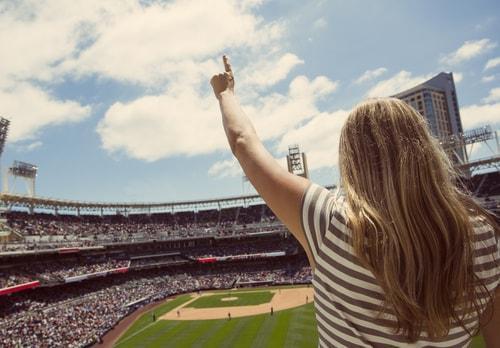Assumption of Risk by Fans at a Sporting Event
 With the exception of a WNBA franchise that plays its home games at the Mohegan Sun in Uncasville, Connecticut has not had a top-level professional sports team to call its own since the NHL’s Hartford Whalers moved to North Carolina in 1997. The state, however, is still home to a number of minor league teams in both baseball and hockey. For many residents, it is also fairly easy to travel to New York to catch a Yankees or Mets game on a warm, summer evening. Amidst the peaceful ambience, certain dangers still exist, as spectators are often at risk for being struck by a ball or bat during the course of a game.
With the exception of a WNBA franchise that plays its home games at the Mohegan Sun in Uncasville, Connecticut has not had a top-level professional sports team to call its own since the NHL’s Hartford Whalers moved to North Carolina in 1997. The state, however, is still home to a number of minor league teams in both baseball and hockey. For many residents, it is also fairly easy to travel to New York to catch a Yankees or Mets game on a warm, summer evening. Amidst the peaceful ambience, certain dangers still exist, as spectators are often at risk for being struck by a ball or bat during the course of a game.
With the potential for injury being so prominent, it is reasonable to wonder why there are not more high-profile lawsuits filed against sports teams and the venues in which they play. Sports spectator lawsuits are not very common because of an important element that is inherent to attendance for most fans: the voluntary assumption of risk.
The Dangers Are Real
Each year in the United States, an estimated 1,750 spectators are hit by flying baseballs or baseball bats that fly into the crowd. Approximately two dozen or so are seriously hurt. Compared to Major League Baseball’s total attendance—more than 73 million last year—and considering that such injuries occur at all levels of play, the likelihood of injury is very low. Still, with that many serious injuries per year, it is rather surprising that headline-grabbing verdicts have not threatened the livelihood of the game.
The "Baseball Rule"
Few institutions have the proven staying power and multigenerational appeal of professional baseball, and the feeling of accessibility to the playing field and players has long been one of the primary draws for fans attending games in person. In almost all stadiums and ballparks, there is a protective netting installed in the area immediately behind home plate, and in some venues, the netting extends to the dugouts on either side. From there, the fans are on their own. Nearly all baseball game tickets include a disclaimer—and it is repeated several times by the public address announcer—that the bearer of the ticket assumes the risks that are incidental to the game of baseball. Fans are encouraged to stay alert, of course, but with baseballs traveling at more than 90 or 100 miles per hour, alertness can only do so much.
Courts, traditionally, are extremely hesitant to find hold baseball teams and venues as negligent when a fan is injured by a bat or ball. Rulings have consistently held that since seating is available behind protective netting or in areas of the park unreachable by high-speed objects—such as the upper deck seats—a fan who chooses to sit elsewhere assumes the risk of injury. Over the years, the collective case law surrounding such situations has come be to known as the "baseball rule."
Possible Changes Ahead
There are efforts underway to encourage baseball clubs to install additional netting around the field of play, but change is likely to be effected slowly. Many believe, however, that such protections would be installed immediately if injured fans were given the same legal recourse as victims in other situations.
If you have been injured while attending a live sporting event, the road ahead may be filled with challenges and obstacles. At Woolf & Ross Law Firm, LLC, we will work with you in exploring your options. You may still have avenues available for collecting compensation despite the common use of the "baseball rule." Contact an experienced Hartford personal injury attorney for help today.
Sources:
https://www.bloomberg.com/view/articles/2017-05-11/the-score-no-lawyers-no-nets-dozens-of-injuries
http://www.huffingtonpost.com/brad-reid/assumption-of-the-risk-at_b_5538071.html






